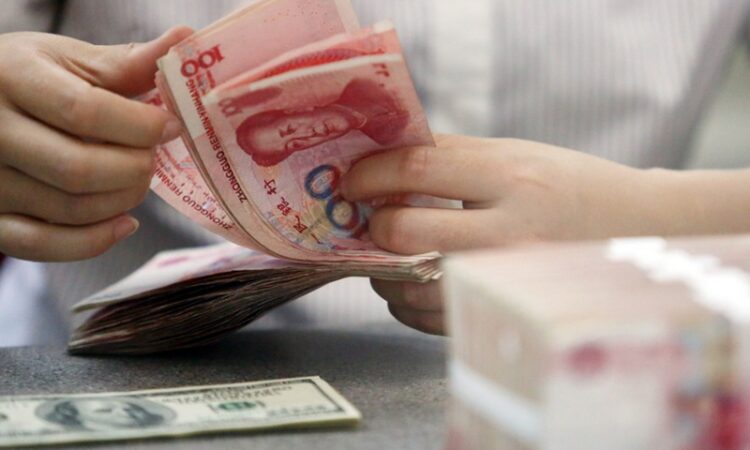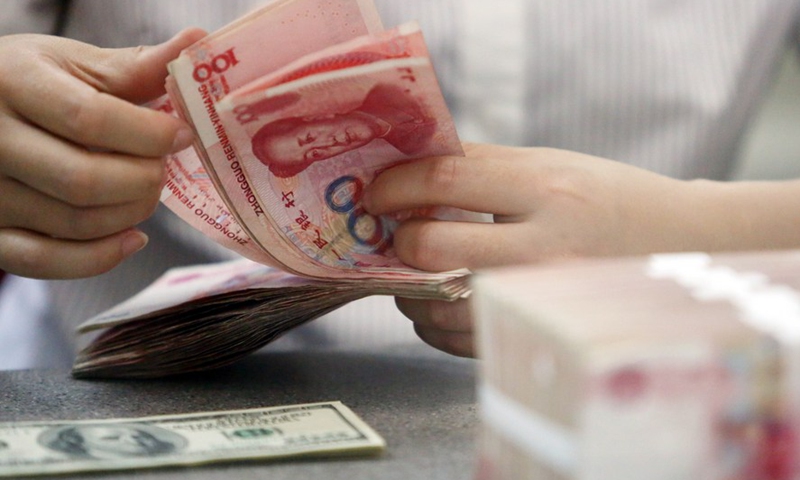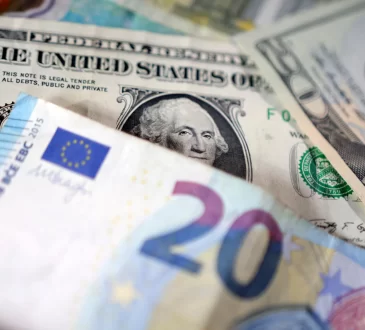

File photo shows a worker counts Chinese currency Renminbi (RMB) at a bank in Linyi, east China’s Shandong Province. (Xinhua/Zhang Chunlei)
As multiple Asian currencies including the yen, won and rupee continue to depreciate against the US dollar, mainly due to the US Federal Reserve’s policy, the yuan has maintained its resilience in the foreign exchange market.
Experts said that this stability is mainly due to China’s solid economic fundamentals as well as effective policy regulation, and they urged the US to undertake responsibility for maintaining global economic and financial stability.
The Bank of Japan decided on Friday to keep its monetary policy stance unchanged. After the announcement, the yen continued diving, with the exchange rate falling past 158 per dollar in the Tokyo foreign exchange market, which revisited the lowest level seen in May 1990.
The yen is not the only Asian currency in trouble. The South Korean won sharply declined against the US dollar on April 16, with the won-dollar exchange rate surpassing the 1,400 won mark for the first time in 17 months.
A number of other Asian currencies are showing similar trends. The Indian rupee, Indonesian rupiah, Malaysian ringgit and Vietnamese dong have all continued on a downward curve.
But the yuan has shown strong resilience in the foreign exchange market. Zhu Hexin, deputy governor of the People’s Bank of China and head of the State Administration of Foreign Exchange, said at a press conference that the yuan has risen steadily against a basket of currencies, and it has performed soundly among global currencies. Cross-border capital flows are generally balanced, with generally stable foreign exchange reserves.
“Sharp declines of multinational currencies against the dollar were mainly influenced by the policies of the Federal Reserve,” Wang Peng, an associate research fellow at the Beijing Academy of Social Sciences, told the Global Times on Sunday.
During a panel discussion on April 16, Federal Reserve Chair Jerome Powell signaled policymakers will wait longer than previously anticipated to cut interest rates following a series of surprisingly high inflation readings.
Since last year, the market generally believed that the Federal Reserve would cut interest rates this year. The Fed’s change in stance led to a number of Asian currencies facing a wave of selling, experts said.
“China’s monetary policy independence is relatively strong, but the yen and yen-denominated assets have a long way to go in terms of depreciation,” economist Pan Helin told the Global Times on Sunday.
Wang agreed, saying that “China’s central bank has effectively maintained the stability of the yuan exchange rate by regulating supply and demand in the foreign exchange market and managing cross-border capital flows.”
The steady growth of the country’s economy has also provided a solid foundation for the stability of the exchange rate, Wang said.
Wang said that the depreciation of a local currency implies an increase in the prices of imported goods and services, which, for import-dependent countries, will increase costs for businesses and consumers and may lead to increased inflation.
Moreover, for countries with large amounts of dollar-denominated debt, currency depreciation would increase their debt-servicing costs and could exacerbate fiscal pressures, Wang warned.
“As the world’s leading currency issuer, the US, while pursuing its own interests, should also assume responsibility for maintaining global economic and financial stability,” Wang said, adding that more countries will seek currency diversification strategies to reduce their dependence on the dollar and mitigate the associated risks.




